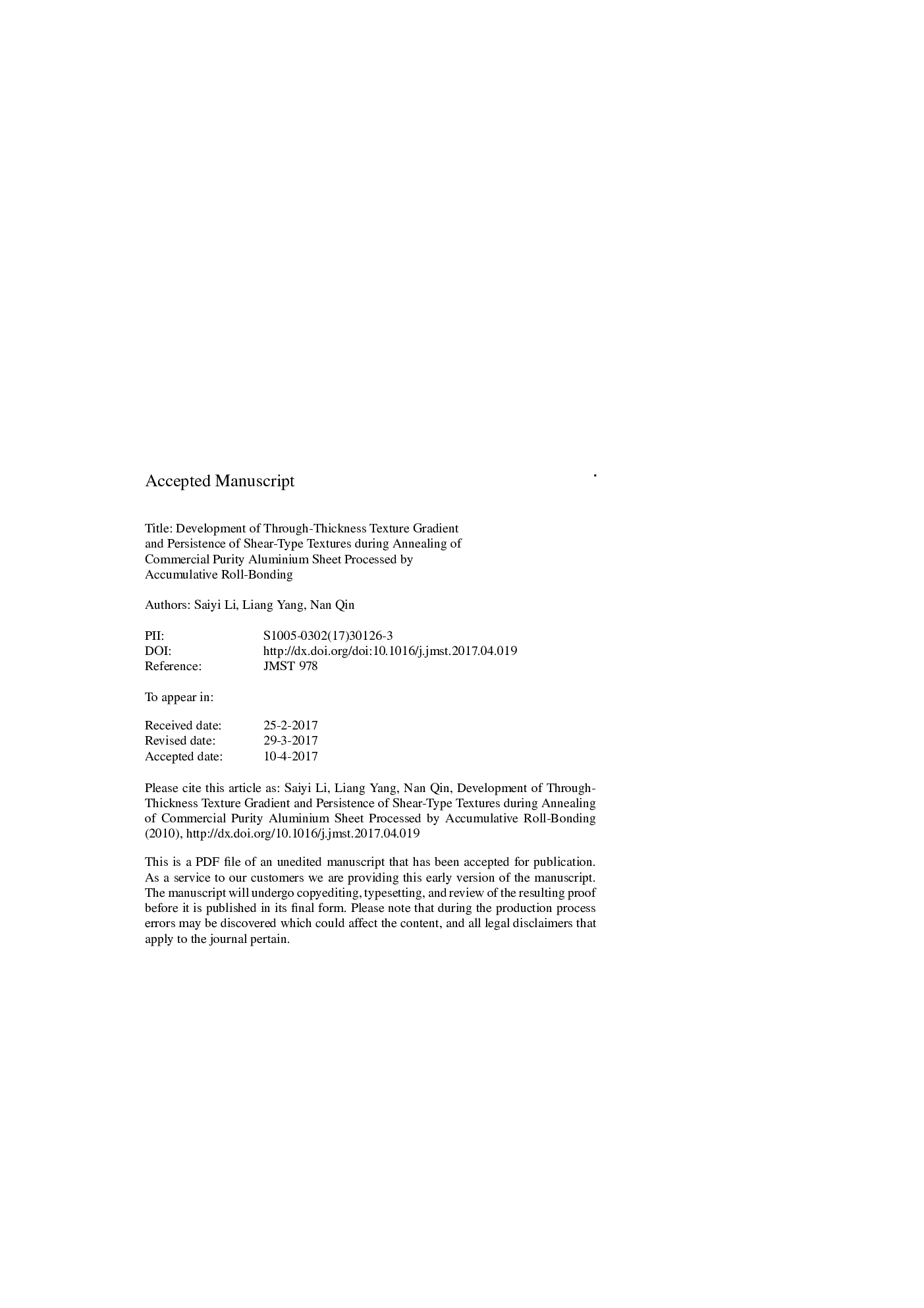| Article ID | Journal | Published Year | Pages | File Type |
|---|---|---|---|---|
| 7951995 | Journal of Materials Science & Technology | 2018 | 28 Pages |
Abstract
Ultrafine-grained commercial-purity aluminum (AA1070) sheets produced by four cycles of accumulative roll-bonding (ARB) without lubrication are subjected to annealing treatments in the temperature range from 250 °C to 400 °C. Microstructures and microtextures in the surface and center regions of the ARBed and annealed sheets are measured by electron backscatter diffraction. The results show that annealing treatments at 325 °C or above lead to a reduction in the microstructure gradient but a significant through-thickness texture gradient different from that in the as-deformed state. The center region is featured by the development of a strong cube texture at the expense of rolling components. In the surface region, shear-type components are either enhanced or largely retained, showing a high persistency upon annealing. While the grain structures are restored predominantly by continuous recrystallization in the surface region, a mixture of continuous and discontinuous recrystallization is envisaged for the center region.
Related Topics
Physical Sciences and Engineering
Materials Science
Materials Chemistry
Authors
Saiyi Li, Liang Yang, Nan Qin,
